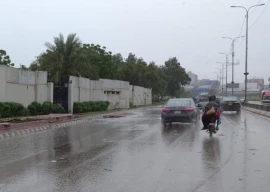
The US Acting Assistant Secretary of State for South Asia and Central Asia, Alice Wells, visited Pakistan last month. I had an informal conversation with her on Pakistan-India relations, CPEC, Afghanistan and the prospects for Pakistan-US relations. Here, I share my impressions as well as some of my suggestions to her.
It seems that the US has been trying to encourage both Pakistan and India to resume the dialogue process and, in the meanwhile, avoid any step that ratchets up the tension and further vitiates the bilateral atmosphere. President Trump’s public offer of mediation between the two countries on Kashmir also appears to be part of the US strategy to push India towards dialogue while also ensuring Pakistan’s continuing support in Afghanistan.
I told Ms Wells that I was not seeing Pakistan resuming talks with India in the obtaining situation. Prime Minister Imran Khan had taken a principled position on Kashmir. It would not be possible for Islamabad to accept India’s unilateral decision of August 5, 2019, stripping Jammu and Kashmir of its special status and splitting it into two Union Territories. I underlined that from Islamabad’s viewpoint, there was no point in talking to New Delhi if the two countries were to face another impasse. By engaging with India in sterile bilateral dialogue, including on the back channel, Pakistan would end up only legitimating India’s unconstitutional actions. It would also embolden India to continue its draconian measures in Kashmir.
I added that international mediation on Kashmir was now inevitable, and that the United Nations was best placed for the task, provided its Secretary General could be suitably mandated by the UN Security Council. Alternatively, the US, Saudi Arabia or the UAE could mediate behind the scenes as mediation in the public domain might stumble into stalemates before it could begin doing some serious work. Even countries like Norway, with some mediation experience, could be helpful. However, it would be important to keep the entire process confidential till the time it reaches its logical conclusion.
Ms Wells appeared unsure of India ever agreeing to such a process or even restoring the status quo ante in Kashmir. I, however, stressed that there was no possibility of Pakistan and India ever living together in mutual harmony without first resolving the Kashmir dispute, adding that one hoped that the US did have an interest in peace in South Asia and not in maintaining perpetual hostility between the two neighbours.
As for Afghanistan, the Trump administration is pressing Pakistan to deliver the Taliban, especially on the issue of ceasefire and intra-Afghan dialogue and eventually, reconciliation. The US would prefer not to leave Afghanistan and its rich natural resources to China and Russia. Leaving Afghanistan sans tenable modus vivendi is also not a plausible option. The Kabul regime and India are particularly averse to the idea. In fact, some internal and external actors may prefer the instability to continue in Afghanistan as the present situation serves their immediate to long-term interests.
Pakistan has its own limitations and the US needs to understand this. The former may have some influence but it is not in a position to force the Taliban into accepting conditions that may result in playing second fiddle to the Kabul regime. The Taliban is an ideological movement and movements render themselves irrelevant if they compromise on the very fundamentals of their raison d’être. Ergo, the prospects of peace in Afghanistan, if any, are rather slim, especially in an election year in the US.
On the issue of FATF, Ambassador Wells thought that the pressure on Pakistan was yielding positive results as the country was gradually fixing its domestic laws related to terror financing and money laundering. She expressed the hope that Pakistan would continue taking necessary steps as the US was keen to see Pakistan removed from the FATF grey list as soon as possible.
We also briefly discussed the Mumbai attack trial underway in Pakistan. I told her that while serving in New Delhi I could not help but gather the impression that India was not interested in concluding the trial, for it gives India a good talking point to keep hammering Pakistan on terrorism. Hence, India has been generally reluctant to cooperate in terms of recoding statements of witnesses and providing the material evidence.
In this regard, I also referred to the book by Elias Davidsson, The Betrayal of India, in which he revisits the 26/11 evidence, raising many questions about India’s role. I added that acquitting all those accused in the Samjhota Express case, in which 42 Pakistanis were killed, was least helpful. It was strange that the US stayed quiet in the matter.
On China-Pakistan relations, the US is visibly uncomfortable, especially when it comes to the China-Pakistan Economic Corridor (CPEC). CPEC is indispensable for the success of the Belt and Road Initiative (BRI) and the latter, as envisioned by President Xi Jingping, is considered as the sine qua non for China’s supremacy in the years to come. It is, therefore, understandable why the US continues taking public potshots at CPEC, projecting it as contrary to Pakistan’s long-term economic interests. Pakistan is advised to be careful lest it end up like Sri Lanka which, left with no option, had to make uneasy compromises on its Hambantota port.
It goes without saying that Pakistan considers CPEC a “game changer” that would help an economic turnaround, making Pakistan a regional economic hub and pivot to China’s drive towards realising its global economic potential. Moreover, China, unlike the US, is seen in Islamabad as a reliable strategic partner standing by Pakistan in difficult circumstances.
Given the regional and global geo-strategic and geo-economic realities, there is no way Pakistan can ever be a strategic partner of the US. However, this does not mean that the two countries cannot build a mutually beneficial relationship wherever their interests converge. Pakistan does not have an either-or option. It needs both China and the US to overcome its present difficulties.
The US as a superpower must show an understanding of the challenges Pakistan has been facing. It needs to revisit some of its policies in the region. For instance, supporting the inclusion of Pakistan in the Nuclear Supplier’s Group would go a long way in building bridges of mutual trust. It is high time for the US to walk past the time warp and make a new beginning.
As President Trump will be visiting India in a few days, the people in Pakistan will be watching closely what he says apropos Kashmir. Will he, while in New Delhi, urge Prime Minister Modi to lift the communication blackout in the Kashmir Valley; revoke draconian laws; demilitarise the region and agree to mediation for working out a just solution in accordance with the aspirations of the people of Jammu and Kashmir?
Let’s hope for something concrete this time. President Trump must push India towards achieving peace in the region by moving from conflict management to conflict resolution.
Published in The Express Tribune, February 22nd, 2020.
Like Opinion & Editorial on Facebook, follow @ETOpEd on Twitter to receive all updates on all our daily pieces.
















































COMMENTS
Comments are moderated and generally will be posted if they are on-topic and not abusive.
For more information, please see our Comments FAQ